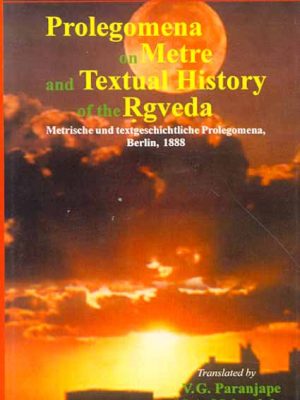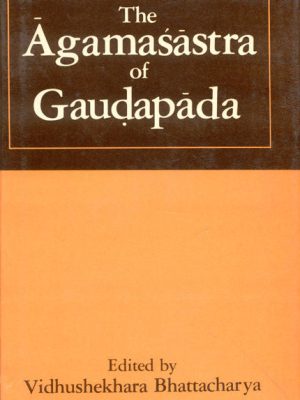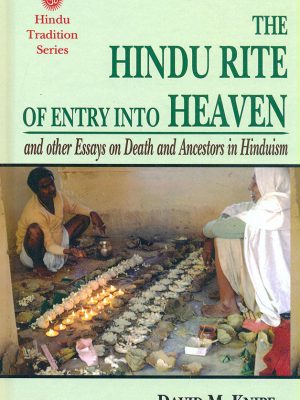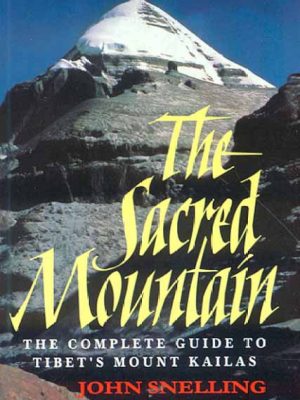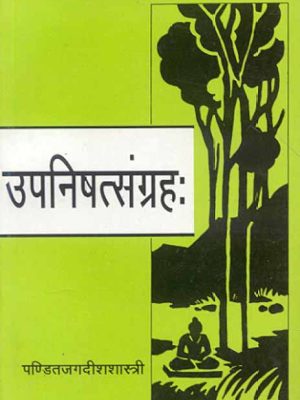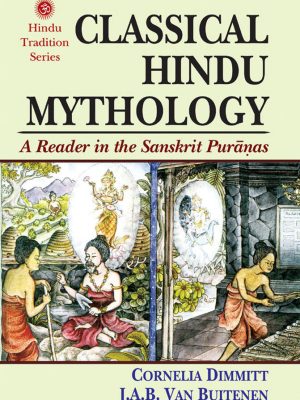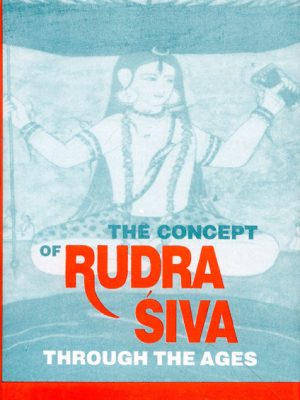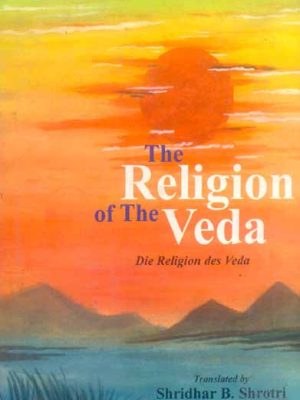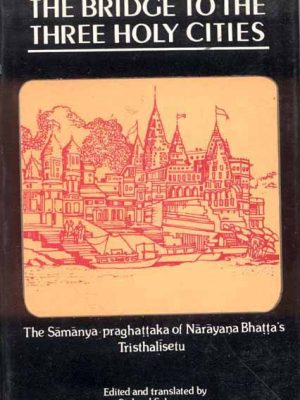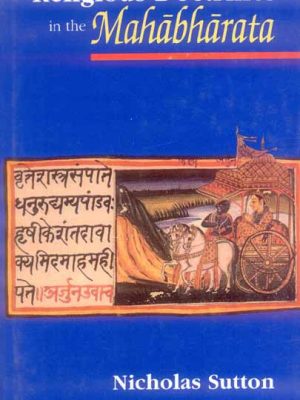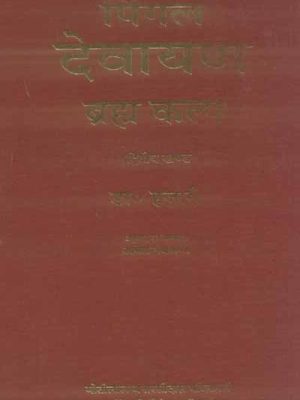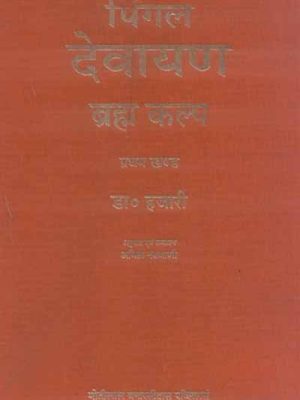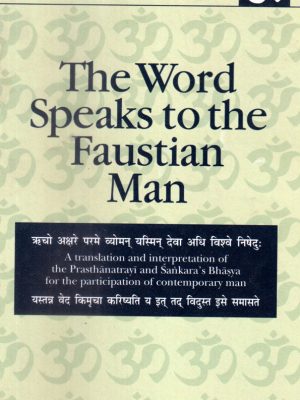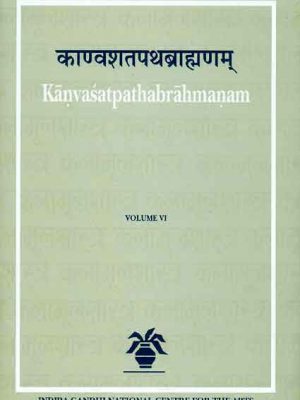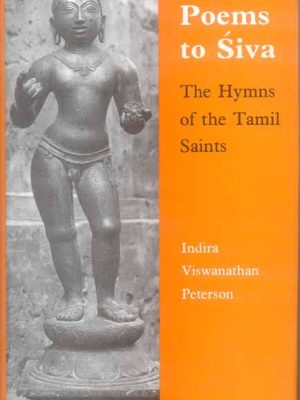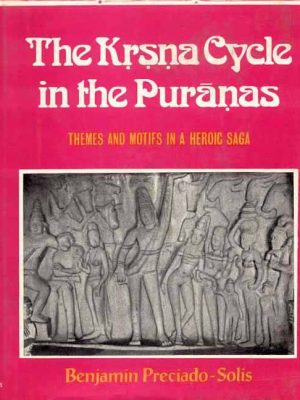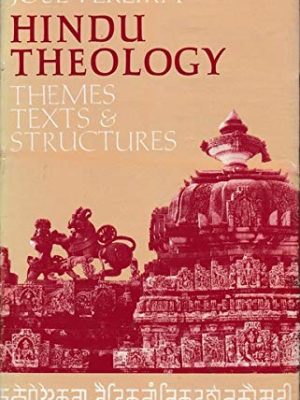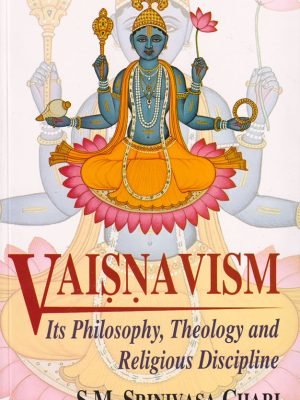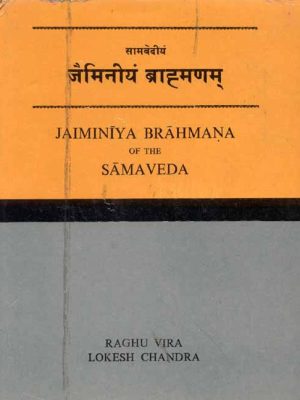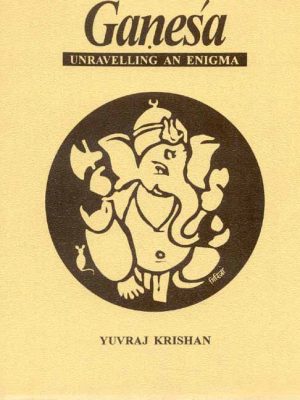Hinduism and Its Sources
-
Prolegomena on Metre and Textual History of the Rgveda: Metrische und textgeschichtliche Prolegomena, Berlin, 1888
Prolegomena on Metre and Textual History of the Rgveda: Metrische und textgeschichtliche Prolegomena, Berlin, 1888
Oldenberg made a distinction between the “original text” of the Rgveda, which is the form in which the rsis composed and recited their hymns, and the “traditional text,” which has been handed down to us in a fixed form by the oral tradition. The “original text” of the Rgveda is the form in which the rsis composed and recited their hymns. Oldenberg conducted a comprehensive analysis of all parts of the traditional text in order to give the original text to the academic community in the form and arrangement that he had uncovered. This was done so that other researchers may benefit from his findings. Oldenberg always intended for the contents that are now being published in this book to serve as a Preface to his planned edition of the Rgveda. This volume is now being published. They are the product of Oldenberg’s in-depth research on the Vedic metre, the principles that underlie the arrangement of the hymns in the Rgveda Samhita, the variations found in the text of the mantras as found in the Rgveda and the later Samhitas and the Brahmanas, orthoepic diaskeuasis, and the two Sakhas of the Rgveda: Sakala and Baskala. Later on, Oldenberg decided against releasing his ‘critical edition’ of the Rgveda as he had originally intended.
Author
HERMANN OLDENBERG,
TRANSLATED BY: V.G. PARANJAPE & M.A. MEHENDALE
₹895.00 -
The Agamasastra of Gaudapada
The Agamasastra of Gaudapada
Because the author was dissatisfied with the interpretation provided by Sankara and his followers as well as the interpretation provided by some other teachers, he has made an effort in the following pages to present to the readers his own interpretation of the work based on how he has understood it. On the other hand, he makes no claim whatsoever that his interpretation is the interpretation, in other words, the meaning that Gaudapada himself had in mind. The author of the current book has provided a fresh edition of the text of the Agamasastra based on a number of distinct manuscripts and editions, which is then followed by an English translation of the text. His annotation follows immediately after this. Appendices are included at the conclusion of the book and include the text of the Mandukya Upanisad as well as an English translation of it. Additionally, there are many distinct indexes and versions of the MSS that were used to create the edition of the Agamasastra text.
About the Author(s)
Vidhushekhara Bhattacharya
₹895.00The Agamasastra of Gaudapada
₹895.00 -
The Sacred Mountain: The Complete Guide to Tibet’s Mount Kailas
The Sacred Mountain: The Complete Guide to Tibet’s Mount Kailas
Mount Kailas-the most sacred mountain in the world. Uncannily symmetrical, this remote and remarkable peak located in the forbidden land of Tibet might have been built by superhuman hands. It stands out of a primordial hands. It stands out of a primordial landscape: a horizontally stratified plinth thousands of feet high, crowned with a perfect cone of pure snow.
To Hindus it is the Throne of the great god Shiva. Buddhists associate it with Chakrasamvara, a powerful Tantric deity, and with the sage Milarepa, who fought a magic duel there with a shaman priest in ancient times. To the Bonpo, the followers of the indigenous religion of Tibet, it is the giant crystal on which their founder, Thonpa Shenrab, descended to earth from the skies.
For more than a millennium, Buddhist, Hindu and Bonpo pilgrims have been visiting this Throne of the Gods and performing pious cirumabulation around it. John Snelling recounts their difficult and dangerous pilgrimages and analyzes the spiritual significance of Kailas-and of sacred mountains in general. He also retells the tales of the handful of Western travellers who reached Kailas between 1715 and 1949-an exclusive club of intrepid explorers, mountaineers, big game hunters and officials. Then in 1984 the Chinese authorities allowed Westerners freer access; so the tales of a new wave of contemporary travellers have in this completely revised and enlarged edition been added to those of their great precursors.
The new edition of this acclaimed travel book is particularly indispensible for all those wishing to visit Mount Kailas, for it contains a comprehensive Guide for Travellers as well as up-to-date maps. For the armchair traveller there is much to absorb and thrill too-not least the lavish array of photographs, many in colour…
₹995.00 -
Upanishad Sangrah: (188 Upanishdon ka Sangrah)
Upanishad Sangrah:(188 Upanishdon ka Sangrah)
The publication gives an exhaustive account of the development of Sanskrit literature in a format that is concise and condensed. It encompasses a broad study of many forms of literature, including the Vedas, Epics, Puranas, Classics, and Philosophy. It gives insight on the life and philosophy of Ancient and Medieval India as reflected in the literary products of those times in India’s history. [Citation needed] It offers knowledge that is not only fascinating but also instructional, and it does so via the short epitome that is provided in the appendix on technical literature, which includes law, science, and the arts. The bibliographical notes and index that are given at the very end contribute to the worth of the work and make it as helpful as possible to the reader. Even in this day and age of highly developed history, when even the exceptional investigations of prominent antiquarians have become obsolete, the usefulness of this relatively short piece of work has not lessened in any way despite the passage of three quarters of a century.
About the Author(s)
Pandit Jagdish Shastri
₹995.00 -
Classical Hindu Mythology: A Reader in the Sanskrit Puranas
Classical Hindu Mythology: A Reader in the Sanskrit Puranas
The Mahapuranas are the texts that best represent the conventional wisdom of Hindu mythology. This anthology includes recent translations of these stories, of which only a handful have ever been made accessible in English previously, and as a result, it makes available a substantial new section of Hindu mythology.
There are six different chapters in all in this book. Myths are told in “Origins” that are associated with creation, time, and space. The book “Seers, Kings, and Supernaturals” tells stories of rivers, trees, animals, demons, and mankind, most notably heroes and wise men. Krsna, Visnu, and Siva each have their own chapter to devote to debunking the many myths that circulate about them. The tales of the wives and lovers of the gods are told in the chapter titled “The Goddess.” The chapter also discusses Kali, the fierce goddess of conflict.
In the introductions that they have written, the editors have provided not only a historical context in which to analyse Hindu mythology but also a comprehensive examination of the sources upon which it is based. The several names that were originally given. The editors have included a comprehensive lexicon in order to make these names more understandable.
Author
Cornelia Dimmitt
₹995.00 -
Concept of Rudra-Siva Through the Ages
Concept of Rudra-Siva Through the Ages
The current book sheds fresh information on the progressive growth of the notion of Rudra-Siva in his animal, phallic, and human forms from the days of the Harappa Civilization. This development can be traced back to when the Harappa Civilization existed. It investigates how Siva, the composite Aryan-non-Aryan Divinity, was not only admitted but was ultimately crowned with an exalted position in the Brahmanical pantheon; how the bull, which was once identified with the deity, was regulated to the position of a vahana; how phallism was related to Saivism; and also how Siva, in his different forms, was represented in early Indian Art and the Art of Further India. Because of the breadth and depth of the author’s research, he has been able to fill an important need in the field, and his approach to the topic as a whole is unmatched. A comprehensive bibliography is included in this rigorous research on Siva that was conducted.
Author
MAHADEV CHAKRAVARTI
₹995.00 -
The Religion of the Veda: Die Religion des Veda
The Religion of the Veda: Die Religion des Veda
The Vedic Literature, which is the oldest product of the Aryan mind and is held in the highest esteem and is regarded as the most sacred by Hindus, presents a panorama of the life of the ancient population of India in all of its facets. Vedic Literature is the oldest product of the Aryan mind and is held in the highest esteem. Herman Oldenberg was the professor who pioneered the first critical examination of frightening literature in the last several centuries, and European academics, mostly Germans, were the ones who conducted the research. His masterpiece, titled Die Religion des Vedas, was published for the first time in 1894, and a revised version was released in 1916. In his thorough and in-depth research on the Vedic religion, he took use of linguistic approaches, as well as those from the fields of ethnology and folklore. This work has had a significant influence on subsequent Vedic studies and has an enduring interest to the student of the Veda, as is amply evident from the fact that even after nearly a century has passed since its first publication, it continues to attract the attention of Vedic researchers and is very frequently sought for guidance and consultation by them, and here is the first ever English translation of these four classic texts.
The book is divided into four chapters, each of which is preceded by an introduction that provides a comprehensive discussion of the source material, which includes the Vedas, Brahmanas, and sutra. The first chapter discusses the gods and demons of the Vedic tradition in general, while the second chapter delves into the specific gods of the Vedic tradition, including Agni, Indra, Vruna Mitra, and others, as well as the bad demons, the beginning of the universe, and the divine and moral realms. The third chapter discusses in depth the religion of sacrifice, which includes topics such as magic observances, festivals, prayer, and priests. The fourth chapter discusses animism, the dead, soul heaven, and ell, as well as ghosts, fathers, and burial ceremonies.
Author
HERMANN OLDENBERG
₹995.00 -
The Bridge to the Three Holy Cities: The Samanya-praghattaka of Narayana Bhatta’s Trishalisetu
The Bridge to the Three Holy Cities: The Samanya-praghattaka of Narayana Bhatta’s Trishalisetu
In the Hindu tradition, the study of holy locations and pilgrimages to such places is considered to be a sub-field of the Dharmasastra. This sub-field is known as tirtha. The “Bridge to the Three Holy Cities” (also known as “Tristhalisetu”) of Narayana Bhatta, which was composed in Varanasi in the 16th century A.D., is regarded as the canonical and most authoritative work of the extensive tirtha literature. It was authored by Narayana Bhatta. The book is divided into four parts, but only the third, fourth, and final parts were included in the Anandasrama version that came out in 1915. The first, or “General,” Section of the Samanya-praghattaka, which was not included in that edition, discusses the concept, definition, and distinguishing characteristics of tirthas, and prescribes in detail the procedures and practises of a pilgrimage. However, this section was omitted from that edition. Both a critical edition of the text of the Samanyapraghattaka as well as a translation that has been annotated are included in this book. The practise of making pilgrimages is an important part of Hinduism, and this literature provides a variety of knowledge relevant to that subject.A
Author
Richard Salomon
₹995.00 -
Religious Doctrines in the Mahabharata
Religious Doctrines in the Mahabharata
This is the longest epic poem ever written, and it is widely considered to be one of the best epic poems ever written in any language. With the intention of serving as a treatise on life in general, it covers topics such as religion and ethics, politics and government philosophy, and the search for redemption.
Reprint of a foundational text on the Mahabharata that examines the book’s most important ideas and topics. a new perspective on the ancient Hindu and Indian epicReview(s)
“…it explores a certain discourse rather than expounding a single dogmas” … extremely useful to have materials from the whole epic so carefully assembled and compared.” – Journal of Royal Asiatic Society
“This is an eminently readable book.
Author
Nicholas Sutton
₹995.00 -
Pingal Devayan (Vol. 2): Brahma Kalpa (Vol. 2)
Pingal Devayan (Vol. 2): Brahma Kalpa (Vol. 2)
India, the beginning of each new era is traditionally marked by the composition of an epic. The history makes this quite clear. Pingal Devayan (Vol. 2): Brahma Kalpa (Vol. 2) The Ramayana was written down at the time before the transition from the Silver Age to the Bronze Age. Before the end of the Bronze Age and the beginning of the Iron Age, the Mahabharata was written. Now that the Iron Age is drawing to a close and the Golden Age is getting closer, a new epic known as Devayan has begun to take shape. In contrast to the previous two epics, Devayan does not only inform us of the impending arrival of the Golden Age. In its place, it provides an account of the whole of the human cycle, which spans 26,000 years and encompasses the Golden, Silver, Bronze, and Iron Ages. It is written in the Anusthupa metre, which is the traditional Indian epic metre, and comprises of thirty-two books that are each split into twelve volumes. Each volume has one thousand pages. It covers the “beginning and the creation of the cosmos,” as well as the whole of the history of the globe throughout the four eras, up to and including the Golden Age that is about to begin. This is the era of the supramental awareness that Sri Aurobindo envisioned while he was writing. In the future, man will develop into a creature with an entirely different and divine awareness that is founded on the teachings presented in the Vedas. The venerable Indian custom is being practised today.
Author
Dr. Hazari
₹995.00 -
Pingal Devayan (Vol. 1): Brahma Kalpa (Vol. 1)
Pingal Devayan (Vol. 1): Brahma Kalpa (Vol. 1)
The first volume contains coverage of five different mandalas (books). Pingal Devayan (Vol. 1): Brahma Kalpa (Vol. 1) The Book of the Gods (the Book of the Deva), the Book of the Sages (the Book of the Rishi), the Book of Sacrifice (the Book of Yagna), the Book of Divine Powers (the Book of Biti), and the Book of Pragatha (son of Rishi Kanwa). In Deva Mandala, the manifestation of the epic, the beginning of creation, the births of gods and demons, their battles, the birth of Satyadev, the God of Truth, and the formation of the Time Wheel are all described. In the Rishi Mandala, the life of the sage Vashishta and the devastation caused by the sage Vishwamitra are both recounted in detail. It also discusses the activities of the shadowy powers of the night, known as Nakta, as well as the formation of the psychic entity known as Bitihotra. The Yagna Mandala tells the story of how the wise people asked Agni, the god of fire, for assistance in initiating a sacred sacrifice to call forth Satyadev, the god of truth, who had vanished from the world because of the influence of evil forces. These chants are hymns to the mystic fire, and their purpose is to restore truth to the process of creation. The Biti Mandala is a narrative that describes the capabilities of the celestial deities as well as the cleansing that the Bitihotra provides (psychic being). Following the completion of the cleansing process, the psychic being will identify with the Truth. This takes place in the presence of the holy trinity, which consists of Brahma, Vishnu, and Maheshwara, as well as other godheads, sages, and the four divine energies, which are known as Maheshwari, Mahakali, Mahalakshmi, and Saraswati. The Pragatha Mandala provides an account of Kanwa rishi’s family as well as the union of Pragatha, Kanwa’s son, and Gathini. They are Kali, the goddess of the Iron Age, who sprang from their offspring. The book goes into great depth about Kali’s upbringing and the events that lead to his becoming an anti-god. The tale of the birth of Trita and Dwita, sons of Rishi Aptya, who would limit the impact of Kali in Satyadev’s absence is also featured. Trita and Dwita would do this during.
Author
Dr. Hazari
₹995.00 -
₹1,000.00
-
-
Poems to Siva: The Hymns of the Tamil Saints
Poems to Siva: The Hymns of the Tamil Saints
The Tevaram hymns are the fundamental text of Tamil Saivism, which was one of the earliest prominent large-scale devotional groups within Hinduism. These lyrics were written by three poet saints during the sixth and eighth centuries A.D. Tevaram hymns were composed within this time period. These hymns provide vivid and moving portraits of the images, myths, rites, and adoration of Siva, and they continue to be loved and sung by the millions of followers of the Tamil Saiva tradition. Indira Peterson eloquently renders into English a substantial portion of these hymns, and she does so in a way that makes them accessible to English readers. This anthology is a valuable resource for the study of South Indian popular religion as a result of her introduction and annotations, which provide light on the literary, theological, and cultural settings in which the work was produced. Indira Peterson identifies the Tevaram as a pivotal work in the history of Tamil culture. The Tevaram is both a synthesis of pan-Indian civilisation and Tamil civilization, as well as a uniquely Tamil expression of the love of song, holy landscape, and ceremonial religion. Her examination of this work leans heavily on her ground-breaking research into the performance of the hymns and its relationship to the art and ritual of the South Indian temple.
Review(s)
“Peterson’s graceful and clear style makes for a smooth reading of this arcane study, which is supplied with voluminous footnotes, a glossary and an indexÄ . Peterson has broken new ground in introducing to her readers the first large-scale devotional son
Author
Indira Viswanathan Peterson
₹1,000.00 -
The Krsna Cycle in the Puranas: Themes and Motifs in a Heroic Saga
The Krsna Cycle in the Puranas: Themes and Motifs in a Heroic Saga
Krsna is often regarded as one of the most beloved personalities in Indian literature and religion. The accounts of his life and the actions he performed continue to play an important role in the literary traditions of India right up to the present day. The primary ideas and recurrent images that can be seen throughout the Krsna mythology up to the 10th century are the focus of this book. In the first chapter, the antecedents of the figure of Krsna that may be found in the Vedas are investigated, as are some of the viewpoints that suggest that Krsna can be found in the hymns of the Vedas. An exhaustive survey is made of all of the archaeological and literary evidences, along with their interpretations and discussions by modern scholars, and the second chapter deals with the first historical evidence on Krsna up to the beginning of the Christian Era. This chapter covers the time period from the beginning of the Christian Era to the beginning of the Christian Era. In the third and fourth chapters, an examination of the motifs and themes found in the Krsna saga is presented using a folk-comparative methodology. Particular focus is placed on the parallels between the Krsna saga and the mythology surrounding Hercules. The last chapter provides an overview of the Krsna tales as they were shown in iconography up to the 10th century. In addition to this, there is a collection of images that depict the majority of the iconographical evidence that has been addressed; several of these photographs are being released for the first first time here.
Author
DR. BENJAMIN PRECIADO-SOLIS
₹1,000.00 -
-
Ganesa: Unravelling an Enigma
Ganesa: Unravelling an Enigma
The reverence shown to Ganesa is unrivalled among the many indigenous religious systems.
as well as subgroups within the Jainas, Buddhists, and Hindus. He is a deity who stands alone in terms of in a variety of ways, including his unusual physiognomy and his dual nature as a vighnakarta. (the one who causes difficulties), as well as a vighnaharta (remover of obstacles). He is worshipped first in order to guarantee the success of all subsequent religious and secular activities and enterprieses. GAnesa is also worshipped as the deity of music and dancing. The religion that the worship of Ganesa became widespread across Asia. The ascent of Ganesa to the position of preeminence in the canon of traditional Hinduism, as one of the, which is absolutely extraordinary, is comprised of the panca devatas. This is an older form of the phrase. The boring tale of how the White House was built from a log cabin. In recent years, there have been various research conducted on this deity; this one is the most current. textual and linguistically most extensive, completely documented from all original sources, and creative, and packed with beautiful illustrations throughout. It tracks the beginning as well as the progression of pauranika Ganesa, from pre-pauranika Vinayaka, a vighnakarta, into pauranika Ganesa, a vighnaharta, dissects his particular traits and attributes his success to researches how he is portrayed in art not just in India but also in other nations pertaining to Asia. It attempts to solve the riddle of a non-Vedic, non-epic, and a non-historical text a deity of non-Aryan origins being elevated to a prominent position in the Hindu pantheon. The tactics used by devotees of Ganesa to advertise and spread the word about his religion and status and the long-lasting consequences obtained make for an interesting case study in public relations work.Author
Yuvraj Krishan
₹1,195.00Ganesa: Unravelling an Enigma
₹1,195.00
